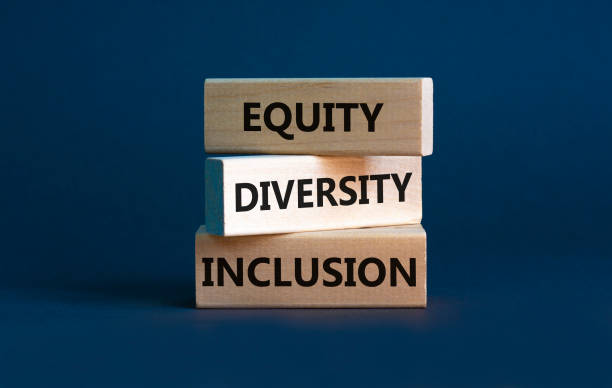Financial inclusion in India is not just a buzzword in the nation’s economic landscape; it’s a transformative force driving the country’s journey towards equitable growth. Ensuring that every citizen, regardless of their socio-economic status, has access to essential financial services is pivotal for fostering economic empowerment and reducing poverty. This blog delves deep into the multifaceted aspects of financial inclusion in India, exploring its current state, the pivotal role of technology, government initiatives, and the road ahead. By the end of this article, you will have a comprehensive understanding of how financial inclusion is shaping the future of India’s economy and what can be done to enhance its reach and impact. Let’s embark on this informative journey together.

Understanding Financial Inclusion in India
Table of Contents
ToggleFinancial inclusion refers to the process of ensuring access to financial services and timely, adequate credit where needed by vulnerable groups such as weaker sections and low-income groups at an affordable cost. It encompasses a range of financial services including banking, credit, insurance, and pension products. The role of financial services in improving the quality of life cannot be overstated. Historically, India’s financial inclusion journey has been fraught with challenges but also marked by significant milestones.
The State of Financial Inclusion in India
As of 2024, financial inclusion in India has seen notable progress, but gaps remain. According to the World Bank’s Global Findex Database, about 80% of Indian adults now have a bank account, up from just 53% in 2014. However, usage of these accounts remains a concern, with many accounts lying dormant. Comparatively, India’s financial inclusion metrics are better than several developing countries but lag behind developed nations. You can explore more in the Global findex database
Government Initiatives for Financial Inclusion in India
The Indian government has launched several initiatives to promote financial inclusion:
Pradhan Mantri Jan Dhan Yojana (PMJDY):Launched in 2014, PMJDY aimed to provide universal access to banking facilities. By 2024, the scheme has opened over 450 million bank accounts, though challenges like account inactivity and limited financial literacy persist.
Direct Benefit Transfer (DBT): DBT aims to transfer subsidies and benefits directly to the bank accounts of beneficiaries, reducing leakage and ensuring that the benefits reach the intended recipients.
Atal Pension Yojana (APY) and Pradhan Mantri Jeevan Jyoti Bima Yojana (PMJJBY): These schemes focus on providing pension and life insurance to the unorganized sector workers, enhancing financial security.Digital India Initiative: This initiative focuses on improving digital infrastructure to facilitate financial inclusion. It includes the promotion of digital payments and increasing internet penetration in rural areas.
For more detailed reports, refer to the Reserve Bank of India’s Annual Reports.

The Role of Technology in Financial Inclusion in India
The fintech revolution has played a pivotal role in advancing financial inclusion in India. Mobile banking and payment systems like UPI (Unified Payments Interface) and digital wallets such as Paytm have transformed the financial landscape. The Aadhaar-enabled payment system has further streamlined transactions, making banking accessible to even the remotest areas.Case studies of successful fintech companies like Paytm, PhonePe, and others highlight how technology can bridge the gap between financial services and underserved populations. These innovations have not only increased accessibility but also convenience and trust among users.
Financial Literacy and Education
Financial literacy is crucial for promoting financial inclusion. Without understanding how to use financial services, the mere availability of these services is insufficient. The government and various NGOs have launched initiatives to improve financial literacy. Programs like the National Centre for Financial Education (NCFE) aim to educate people about financial products, saving, and investing. Success stories and impact analyses demonstrate the significant improvements in financial behavior among educated communities.For more insights, refer to the NCFE Reports.
Microfinance and Self-Help Groups (SHGs)
Microfinance has been instrumental in promoting financial inclusion in India, especially in rural areas. It involves providing small loans to individuals or groups who do not have access to traditional banking services. Self-Help Groups (SHGs), primarily comprising women, have been pivotal in empowering communities. They provide a platform for savings, credit, and mutual support.The National Bank for Agriculture and Rural Development (NABARD) has been a key player in promoting microfinance. Their Status of Microfinance in India Reports provide detailed insights into the sector’s evolution, growth, and challenges.
Financial Inclusion and Gender Equality
Gender disparity in access to financial services is a significant barrier to financial inclusion. Women, especially in rural areas, often lack access to banking and credit facilities. Initiatives to bridge this gap are crucial for achieving comprehensive financial inclusion. Programs targeting women entrepreneurs and self-help groups have shown positive results.The impact of financial inclusion on women’s empowerment is profound, enabling them to participate more actively in the economy. For detailed analysis, refer to the UN Women’s Report on Gender and Financial Inclusion.

Barriers to Financial Inclusion in India
Despite progress, several barriers to financial inclusion remain in India:
Socio-economic barriers: Poverty, illiteracy, and lack of financial awareness hinder access to financial services.Geographical barriers: Rural and remote areas often lack banking infrastructure.
Institutional barriers: Complex regulatory frameworks and limited outreach of banks.
Cultural and societal barriers: Social norms and gender biases restrict access, especially for women.Addressing these barriers requires a multifaceted approach involving policy changes, infrastructure development, and community engagement.
Future Prospects and Recommendations
The future of financial inclusion in India looks promising, with emerging trends such as blockchain and artificial intelligence poised to further enhance accessibility and security of financial services. However, there is still much work to be done. Policy recommendations for enhancing financial inclusion include Strengthening digital infrastructure Promoting financial literacy programs ,Encouraging public-private partnerships,Simplifying regulatory frameworks
The vision for a financially inclusive India involves ensuring that every citizen has not only access to financial services but also the knowledge and confidence to use them effectively.

Conclusion
In conclusion, financial inclusion in India is a critical driver of economic empowerment and poverty alleviation. While significant progress has been made, challenges remain. By addressing barriers, leveraging technology, and promoting financial literacy, India can move closer to achieving comprehensive financial inclusion. This journey is essential for building a sustainable and inclusive economy, where every citizen has the opportunity to thrive.

5 thoughts on “Financial Inclusion in India: A Comprehensive Journey Towards Economic Empowerment (2024)”